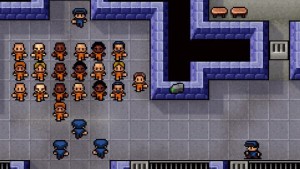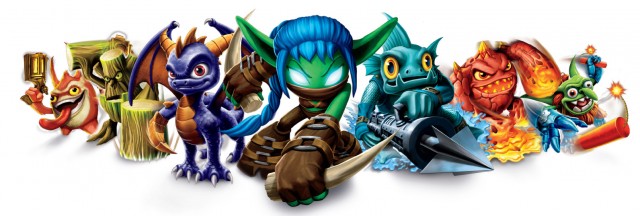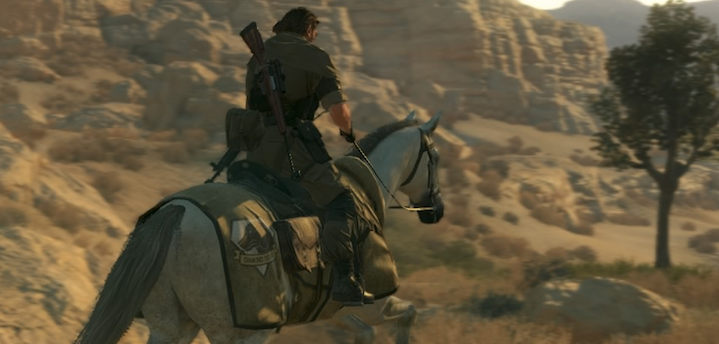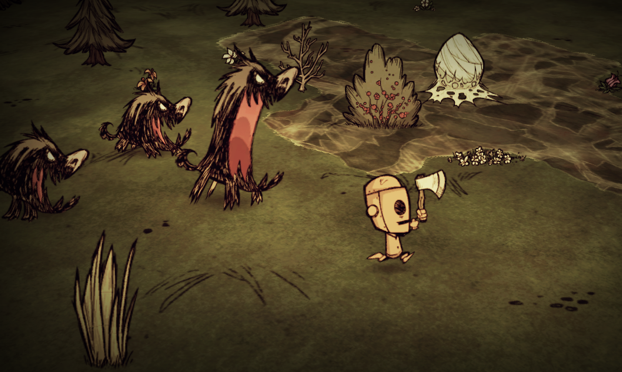A lot of Game Studies proper deals with representation in games, particularly surrounding things like race, gender, sexuality, class, and body type. That may seem like the most basic statement ever (like, duh!), but as I think more about studying games as Game Studies, I need to answer questions about what it is we do as Game Studies scholars. Are there a central set of questions we ask? Are there certain games and perspectives we privilege? And, most importantly for this post, what are we ignoring?
We have written about simulation games in several capacities, as simulation and representation often go hand in hand. Jennifer Justice wrote a fascinating piece on prison simulation games that covers everything from the way race is used to construct the “reality” of the prison to the treatment of prison rape. Samantha Blackmon has written about Harvest Moon, and the way the game goes from being whitewashed to racist in a jarring moment. Alisha recently wrote an incredibly powerful piece on simulated rape, censorship, and links between violent simulations and violent behavior. These are interesting and provocative articles, and they challenge simulation games on an important level. We need to examine and explore games when they simulate our reality, or a version of our reality.
 Simulation is one of the most complex and compelling parts of video games. The combination of visual interface and interaction is ideal for allowing players to explore the depth of a world, or in some cases even explore the depth our own world. What I find most fascinating about simulation games is the mundane and the peripheral, because that’s where arguments get made and that’s where games influence culture. It’s easy to overlook the power of simulation games when they are simulating a fake world: “it’s a world where that problematic thing is supposed to happen” is often the excuse for problematic elements. But it’s what is presented as normal that is the most fascinating and telling of how programmers, the games industry, players, and our culture at large see the world. For example, in the Justice piece mentioned above, jokes about dropping the soap are seen as normal and peripheral in the game. This mimics reality, as popular culture often treats the rape of inmates as hilarious fodder for sitcoms. The joke was not meant to be endemic to the world of The Escapists, but rather as obvious and normal for any world. This is the power of simulation games: of course prison guards are white, of course women are raped by the bad guys, of course there are orphans running around, of course gravity and physics and weather all mimic the real world.
Simulation is one of the most complex and compelling parts of video games. The combination of visual interface and interaction is ideal for allowing players to explore the depth of a world, or in some cases even explore the depth our own world. What I find most fascinating about simulation games is the mundane and the peripheral, because that’s where arguments get made and that’s where games influence culture. It’s easy to overlook the power of simulation games when they are simulating a fake world: “it’s a world where that problematic thing is supposed to happen” is often the excuse for problematic elements. But it’s what is presented as normal that is the most fascinating and telling of how programmers, the games industry, players, and our culture at large see the world. For example, in the Justice piece mentioned above, jokes about dropping the soap are seen as normal and peripheral in the game. This mimics reality, as popular culture often treats the rape of inmates as hilarious fodder for sitcoms. The joke was not meant to be endemic to the world of The Escapists, but rather as obvious and normal for any world. This is the power of simulation games: of course prison guards are white, of course women are raped by the bad guys, of course there are orphans running around, of course gravity and physics and weather all mimic the real world.
But what I wonder is this: what is the Game Studies scholar’s role when it comes to seemingly mundane games? Games that may have little to no gender, race, or human representation (such as racing games)? Or games that are meant to so exactly mimic reality that an investigation of the handling of race and gender is impossible or fruitless, as that would be an investigation of the game’s counterpart in the physical world (such as sports games)? How do Game Studies scholars—and on a more personal level, how do feminist game scholars— investigate a racing game? How do we investigate Madden? Or do we have nothing to add to the conversation about these games? Should they be left to the scholars that focus on aesthetics, game physics, and the like? My answer to the last question: no. Feminist inquiry does not stop at race, gender, and representation, but it is about a mindset and an approach to investigation that is grounded in ethics. It means asking hard questions about implications, assumptions, and aesthetics—whether the game is representing humans or city streets.
 To that end, I want to talk about a new game I’ve been playing, Forza Horizon 3. With all the challenges discussed above, I originally thought I wouldn’t be able to write a post about FH3, after all, there is little in the way of human representation. But after some soul searching, I think there is a lot to say about this game and games like this. The game takes place in Australia, and has a number of new features that I think really sets the game apart from any previous Forza game, and really any racing game I’ve ever played.
To that end, I want to talk about a new game I’ve been playing, Forza Horizon 3. With all the challenges discussed above, I originally thought I wouldn’t be able to write a post about FH3, after all, there is little in the way of human representation. But after some soul searching, I think there is a lot to say about this game and games like this. The game takes place in Australia, and has a number of new features that I think really sets the game apart from any previous Forza game, and really any racing game I’ve ever played.
The first thing I want to mention, and one reason why I feel compelled to write about this game when I never write about racing games, is because this is one of the more accessible games I’ve ever played. You can literally pick up the controller and start playing, just like a GTA game. It is open world, which racing games have done pretty poorly with in the past, but is done well here. There is far more being valued in the gameplay than dexterity and hand-eye coordination. For example, one of my favorite things is the new “barn find” feature. As you’re tooling around the map, you will get a notification that there may be a cool old car nearby. In the style of American Pickers, you then search around until you find an old barn with a car inside. You get a little cut scene where you learn a bit about the car, and then it goes to get restored. It’s a really fun thing to do; it’s not competitive based; it’s not a race. I think it’s one way the developers thought to be inclusive to different kinds of play styles.
 The next thing I really liked is the ability to join a car club. For anyone who has been a part of the racing community in the physical world (I have, perhaps a story for another time), you know that community and clubs are the heart of the racing and car world. I joined a club called GTG: Girl Tribe Gaming. The tagline for the club is: “We believe that gaming is for everyone! LGBTQIA Friendly: GirlTribeGaming.com.” We have signal boosted these awesome folks before, and it was really great to see them out in the gaming community, creating a positive space for all folks to play. They are walking the talk. They have a podcast and website, and their central mission is to keep things fun and positive while uniting players–so check them out. I am grateful FH3 gave me a chance to join up with them.
The next thing I really liked is the ability to join a car club. For anyone who has been a part of the racing community in the physical world (I have, perhaps a story for another time), you know that community and clubs are the heart of the racing and car world. I joined a club called GTG: Girl Tribe Gaming. The tagline for the club is: “We believe that gaming is for everyone! LGBTQIA Friendly: GirlTribeGaming.com.” We have signal boosted these awesome folks before, and it was really great to see them out in the gaming community, creating a positive space for all folks to play. They are walking the talk. They have a podcast and website, and their central mission is to keep things fun and positive while uniting players–so check them out. I am grateful FH3 gave me a chance to join up with them.
But of course, when it comes to the “community” aspect of the game, where players can post their own content, there are always issues. And there may be with FH3, I have only been playing a few days and the standard edition hasn’t even come out yet. Maybe in three months I’ll write a follow up post about how the community and the racing has become toxic. But I can only judge based on what I see now, which is pretty favorable: The community interaction is limited to sharing artistic shots of the landscape, sharing custom paint jobs, following certain players, and sharing tune-ups to get more power from your vehicle. I spent a fair amount of time browsing this section, because if I’m going to be turned off from a game, it’s usually because of this type of stuff, and it seems that the developers did a great job creating a system that allows for interaction and sharing but not toxicity. I hope the rest of the outlets for this game follow suit. Wouldn’t it be great to have a positive, helpful, and engaged community surrounding a game for once?
 This has been a criminally brief investigation into Forza Horizon 3, and I’m not doing it justice, but it was important to me to think about what types of games we are investigating, how we are investigating, and what we bring to the table as feminist Game Studies scholars in addition to talking about the actual game. I know I will have more to write about the game as I explore it more and once it’s available to a wider audience. Next up in the series on simulation games is an investigation of Madden 17. So stay tuned!
This has been a criminally brief investigation into Forza Horizon 3, and I’m not doing it justice, but it was important to me to think about what types of games we are investigating, how we are investigating, and what we bring to the table as feminist Game Studies scholars in addition to talking about the actual game. I know I will have more to write about the game as I explore it more and once it’s available to a wider audience. Next up in the series on simulation games is an investigation of Madden 17. So stay tuned!




